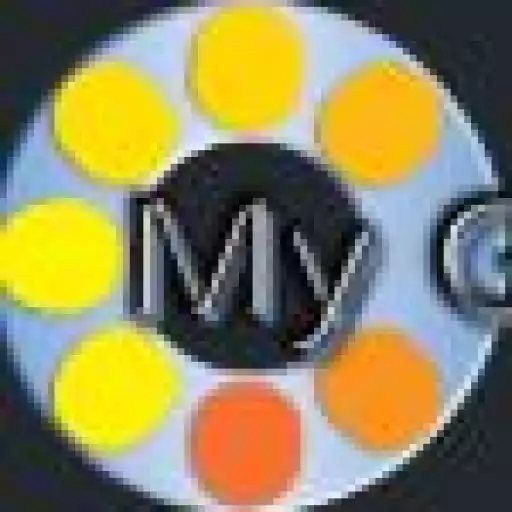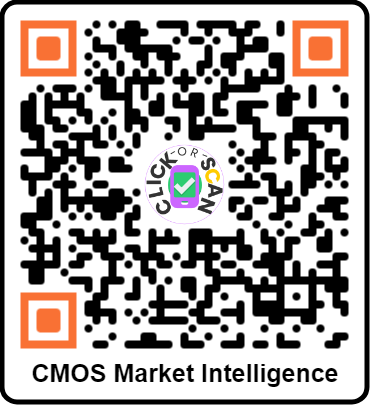CMOS Market Intelligence Research Reports
In today’s rapidly evolving semiconductor landscape, understanding the dynamics of the integrated CMOS tri-gate transistor market is crucial for stakeholders aiming to maintain a competitive edge.
This article provides you with comprehensive CMOS Market Intelligence Research Reports that unveil actionable insights tailored for your strategic decision-making.
As you navigate through the complexities of technological advancements and market trends, you’ll discover how tri-gate transistors, known for their superior performance and energy efficiency, are reshaping the semiconductor industry.
Our in-depth analysis covers critical aspects such as market segmentation, competitive landscape, and emerging technologies within the sector.
By leveraging this data-driven intelligence, you will be equipped to identify growth opportunities, assess potential risks, and formulate strategies that align with the evolving demands of your target market.
Whether you are a manufacturer, investor, or industry analyst, understanding the nuances of this market will enable you to make informed decisions that drive innovation and profitability.
Join us as we delve into the intricacies of the integrated CMOS tri-gate transistor market and empower your organization with the insights needed to thrive in this competitive arena.
Table of Contents CMOS Market Intelligence Research Reports
Understand strain modulation technology’s impact on performance
Strain modulation technology plays a pivotal role in enhancing the performance characteristics of CMOS Tri-gate transistors, particularly for small and large enterprises in various sectors, including defense.
By intentionally introducing strain in the semiconductor lattice, you can achieve significant improvements in carrier mobility, leading to faster switching speeds and reduced power consumption.
This technology enables your designs to meet the increasing demand for high-performance computing and energy-efficient solutions, driving innovation across the board.
However, while the benefits are substantial, it is essential to navigate the associated challenges.
The integration of strain modulation technology may require advanced manufacturing processes and careful material selection, which could pose risks to production costs and timelines.
For businesses operating in competitive markets, balancing the advantages against these challenges will be crucial for leveraging the full potential of CMOS Tri-gate transistors and ensuring sustainable growth.
Assess market trends affecting small enterprises
Understanding market trends is essential for your strategic planning and operational decision-making in the CMOS Tri-gate transistor sector.
Small enterprises, in particular, must stay attuned to shifts in consumer preferences, technological advancements, and regulatory changes that could impact their competitive landscape.
Increased demand for advanced electronics in defense and other high-tech applications is driving growth, but you also face challenges such as supply chain disruptions and fluctuating raw material costs.
Staying ahead of these trends will empower you to adapt your product offerings and maintain a sustainable edge in the market.
Moreover, evaluating the drivers behind market dynamics can reveal new opportunities for innovation and collaboration.
As industries increasingly prioritize energy efficiency and high-performance capabilities, your ability to leverage strain modulation technology could set you apart.
Monitoring competitor strategies, technological breakthroughs, and emerging markets will allow you to make informed decisions that enhance your position within the CMOS Tri-gate transistor market.
By proactively addressing these trends, you can better navigate the complexities of the landscape while positioning your enterprise for long-term success.
Explore large enterprises’ adoption of technology
Larger enterprises are actively embracing advanced technologies to enhance their operational efficiency and product offerings, particularly within the CMOS Tri-gate transistor market.
By integrating innovative solutions, these organizations can leverage scale to optimize production processes and reduce costs, all while meeting the rising demand for high-performance components in sectors such as defense.
The adoption of strain modulation technology is proving instrumental in driving the next generation of semiconductor advancements, allowing these enterprises to push the boundaries of performance and energy efficiency.
However, the transition to new technologies does not come without its challenges.
You may encounter hurdles related to the complexity of implementation, regulatory compliance, and the need for workforce retraining.
Recognizing and navigating these challenges is imperative for large enterprises to fully capitalize on the benefits of technology adoption.
By fostering a culture of innovation and adaptability, you can not only streamline operations but also position your organization as a leader in the evolving landscape of technology within the semiconductor industry.
Evaluate defense sector’s demand for innovations
In the defense sector, the demand for innovations is increasingly driven by the necessity for enhanced performance, security, and reliability in critical systems.
As you explore the implications of this demand, consider how small and large enterprises alike are responding to the need for cutting-edge technologies, including advancements in strain modulation technology.
These innovations not only improve the functionality of CMOS Tri-gate transistors but also meet the rigorous standards required for defense applications, where failure is not an option.
Moreover, the defense industry faces unique drivers and challenges that influence its technology adoption strategy.
Rapid advancements in technology necessitate a proactive approach to innovation, compelling enterprises to invest in research and development while also addressing potential barriers such as budget constraints and lengthy procurement processes.
By understanding these dynamics, you can better position your organization to contribute effectively to the evolving landscape of the defense sector, ensuring that you remain competitive in a market that values innovation and resilience.
Analyze CMOS tri-gate transistor market growth
u r organization to capitalize on the growing opportunities within the CMOS Tri-gate transistor market.
The integration of strain modulation technology enhances the performance characteristics of these transistors, allowing for greater efficiency and scalability in applications across various sectors.
As both small and large enterprises invest in this technology, they contribute to a competitive landscape that is increasingly focused on meeting the demands of high-performance computing, telecommunications, and defense systems.
Analyzing market growth requires you to consider not only the technological advancements but also the external factors that drive demand.
The expansion of the Internet of Things (IoT), the push for energy-efficient solutions, and the rising need for high-speed data processing are significant contributors to the momentum behind CMOS Tri-gate transistors.
However, challenges such as supply chain disruptions and the need for continuous innovation remain prevalent.
By leveraging insights into these drivers and challenges, you can effectively strategize and navigate the complexities of the market, ensuring sustained growth and alignment with industry trends.
Identify key drivers influencing market dynamics
Understanding the key drivers that shape market dynamics is essential for your strategic planning in the CMOS Tri-gate transistor sector.
The ongoing development of strain modulation technology stands out as a pivotal factor, as it significantly improves transistor performance while enabling the miniaturization of devices.
This advancement not only attracts attention from small and large enterprises but also aligns with the escalating demands of industries such as defense, where reliability and efficiency are paramount.
Your ability to harness these technological innovations can position your organization as a leader in a highly competitive market.
Moreover, the interaction between emerging trends and existing challenges plays a crucial role in market evolution.
The increasing adoption of high-performance computing and telecommunications solutions creates a fertile ground for growth, but you must also navigate obstacles like supply chain vulnerabilities and the necessity for ongoing research and development.
By staying attuned to these dynamics and adapting your strategies accordingly, you can effectively leverage opportunities while mitigating risks associated with the rapidly changing landscape of the CMOS Tri-gate transistor market.
Recognize challenges faced by enterprises
The landscape in which enterprises operate is fraught with challenges that require careful navigation to maintain competitive advantage.
For organizations engaged in the CMOS Tri-gate transistor market, understanding these challenges is critical to successful adaptation and innovation.
Supply chain disruptions, driven by geopolitical factors or unexpected global events, can significantly hinder production timelines and escalate costs.
Additionally, the rapid technological advancements in strain modulation technology lead to the necessity for continuous investment in research and development, which may strain financial resources, particularly for smaller enterprises striving to scale effectively.
As you explore opportunities in defense and other high-reliability sectors, it is essential to recognize the regulatory hurdles and compliance requirements that can complicate market entry and product deployment.
Rising competition, not only from established players but also emerging startups leveraging new technologies, further intensifies this challenge.
By acknowledging these obstacles and adopting proactive strategies, your organization can better position itself to navigate the complexities of the CMOS Tri-gate transistor landscape while capitalizing on the evolving marketplace.
Compare strategies of small and large businesses
e from nimble startups, presents both a challenge and a driver for innovation.
Small enterprises often leverage their agility and ability to pivot quickly in response to market trends, enabling them to explore niche markets or develop specialized products that address specific customer needs.
This flexibility can lead to rapid decision-making and a strong emphasis on customer relationships, allowing smaller players to create tailored solutions that larger firms might overlook due to their more bureaucratic structures.
Conversely, large businesses typically benefit from economies of scale and extensive resources, which enable them to invest significantly in advanced technologies and comprehensive marketing strategies.
Their ability to absorb risks and pursue extensive research initiatives often positions them as leaders in technological advancements within the CMOS Tri-gate transistor market.
However, this strength can also lead to slower response times in changing market conditions.
Balancing these differing strategies is vital for both small and large enterprises as they navigate the evolving landscape filled with opportunities and challenges driven by the advancement of strain modulation technology and the dynamics of the defense sector.
Investigate regulatory impacts on market developments
The regulatory landscape significantly influences market dynamics, particularly within the CMOS Tri-gate transistor sector.
Strain modulation technology, which is crucial for enhancing device performance, often faces scrutiny and compliance requirements that can either facilitate or hinder its development.
Understanding these regulations allows you to anticipate challenges and capitalize on drivers that promote innovation, ensuring your strategies remain aligned with market demands.
In navigating compliance, both small and large enterprises must stay informed about emerging standards and potential shifts in regulatory frameworks that could impact their operations.
For defense applications, adherence to stringent regulatory measures is essential.
These regulations not only dictate the technical specifications of products but also shape the competitive environment in which you operate.
By proactively engaging with policymakers and industry stakeholders, you can better position your organization to adapt to regulatory changes that might affect your market standing.
This strategic approach enables you to leverage the drivers of the market while effectively managing the challenges posed by regulatory hurdles, ultimately leading to sustainable growth within the CMOS Tri-gate transistor landscape.
Leverage insights for informed business decisions
By effectively harnessing insights derived from market intelligence, you can make informed business decisions that optimize your positioning within the CMOS Tri-gate transistor market.
Understanding the interplay between strain modulation technology and evolving industry demands allows you to identify opportunities for innovation while mitigating potential risks.
With a comprehensive analysis of drivers and challenges in this sector, you can devise strategies that not only enhance operational efficiency but also align with the specific needs of both small and large enterprises.
Moreover, staying attuned to market trends and technological advancements enables you to anticipate shifts in customer preferences and regulatory standards.
This proactive approach not only fosters resilience but also positions you as a leader in adopting best practices that cater to the defense sector’s unique requirements.
By integrating these insights into your decision-making process, you enhance your capability to navigate complexities and drive sustainable growth in a competitive landscape.
In conclusion, as you navigate the dynamic landscape of the integrated CMOS tri-gate transistor market, leveraging actionable insights from comprehensive research reports will be crucial for informed decision-making.
Understanding market trends, technological advancements, and competitive dynamics will empower you to identify growth opportunities and mitigate potential risks.
By staying abreast of these developments, you can position your organization strategically, ensuring that you are not only responsive to current demands but also poised for future innovations in semiconductor technology.
Embrace these insights as a vital resource in your pursuit of excellence in this rapidly evolving sector.







